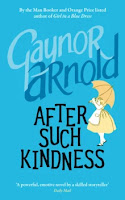"My appreciation of Carroll's versatility as a mathematician, photographer, inventor, diarist and letter writer has grown steadily over the years."
Mark Davies is an Oxford local historian, and the only Oxford guide endorsed by the Lewis Carroll Society. He has helped shape Oxford’s annual Alice’s Day since the first one in 2007, and has participated in French, Dutch, Canadian, Brazilian and British TV and radio documentaries, most notably for BBC 2 and BBC Radio 4. His interest is mainly the many Oxford realities which are hidden away within the apparent fantasy of the ‘Alice’ books, an angle which has enabled him to lecture on this internationally famous topic as far away as Assam in India. "Subsequently, my appreciation of Carroll’s versatility as a mathematician, photographer, inventor, diarist, and letter writer has grown steadily over the years. My fascination with Carroll was initially raised not on account of his books but because of the importance to him and his story-telling of the River Thames, Oxford's waterways having been my original (and continuing) main local history interest. It is because of its diverse watery associations that I became intrigued by Oxford Castle, and republished my book Stories of Oxford Castle in 2017. My biography of the Oxford pastry cook James Sadler, the first Englishman to fly, embraces quite a different element, however!"
Lewis Carroll's Diaries: The Private Journals of Charles Lutwidge Dodgson by Lewis Carroll: actually, it is ten books, covering 1855 to 1897 (with a reconstruction of the missing journals of April 1858 to May 1862 – their disappearance being the cause of countless conspiracy theories!). These diaries are the principal source of practically every piece of Lewis Carroll/Alice analysis that has ever been published, and provide a uniquely revealing chronology of the genesis of one of the world’s classic works of literature. These volumes mean that the enigmatic genius of Lewis Carroll is not the sole preserve of academics or historians; through them, he becomes accessible to us all. Transcribed and fully indexed by Edward Wakeling, a renowned world expert, whose extraordinarily detailed and insightful bibliographical and contextual notes provide an unparalleled insight into Victorian Oxford (London, Surrey, Yorkshire, Sussex, and more).
Some of these volumes are hard to get, but there are some remaining copies at the Lewis Carroll Society if interested.
Lewis Carroll: Photographer by Helmut Gernsheim: mention the name ‘Lewis Carroll’ and most people will immediately think of the two Alice books. Very few would equate the name to Charles Dodgson, the photographer. This, however, is the aspect of the multi-talented Oxford don which Gernsheim, a professional photographer himself, appraised in his 1949 first edition for the very first time, concluding that Dodgson was ‘the most outstanding photographer of children in the nineteenth century. Many of the black and white plates substantiate this claim, but equally, Dodgson’s mastery of this new invention enabled him to meet and photograph (sometimes uniquely) numerous famous writers and artists, as well as many Oxford contemporaries. As an aside, Edward Wakeling’s 2015 Catalogue Raisonné is a comprehensive listing of every one of Dodgson’s hundreds of known photographs.


%20(small)%20April%202019.jpg)







1 comment:
What an interesting and informative article. I certainly didn't know of Dodgson as a photographer and wonder whether there is or has ever been a collection or exhibition for public viewing?
Post a Comment